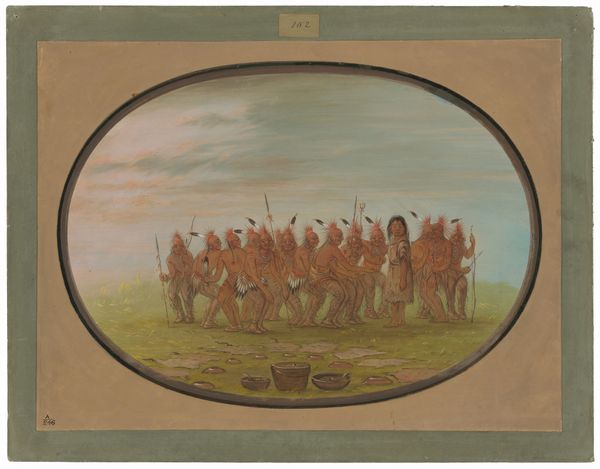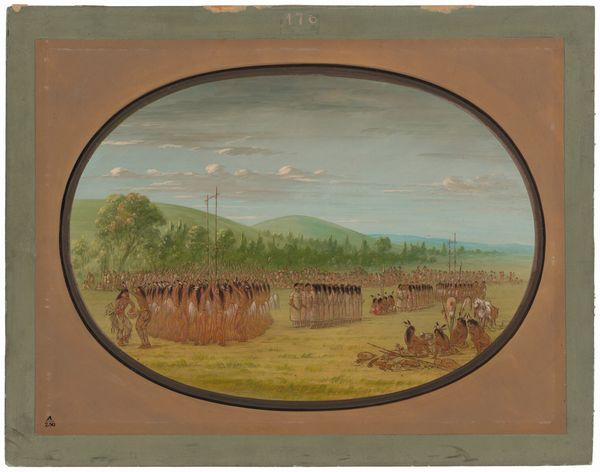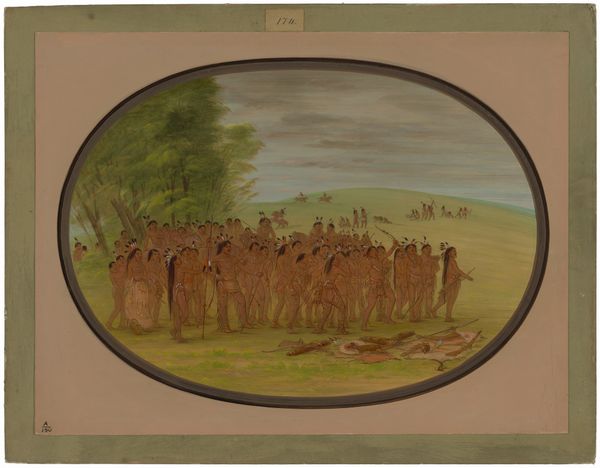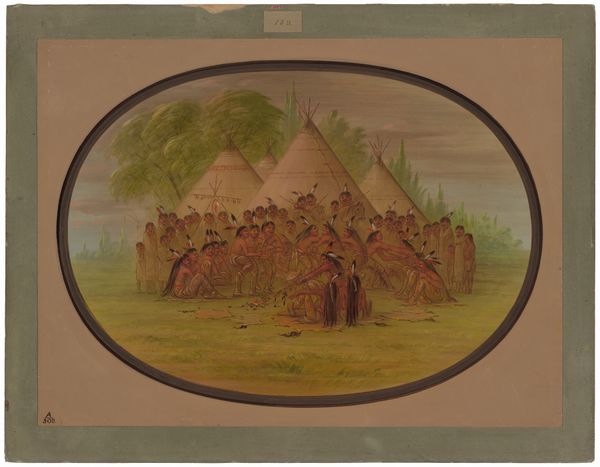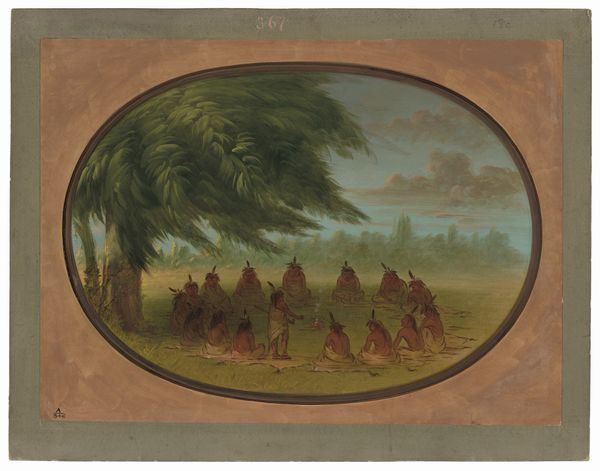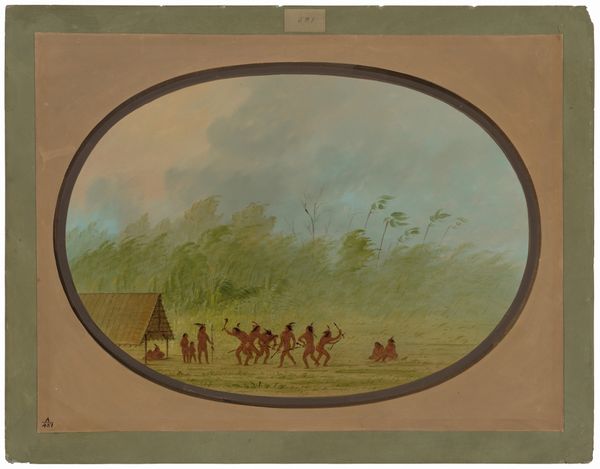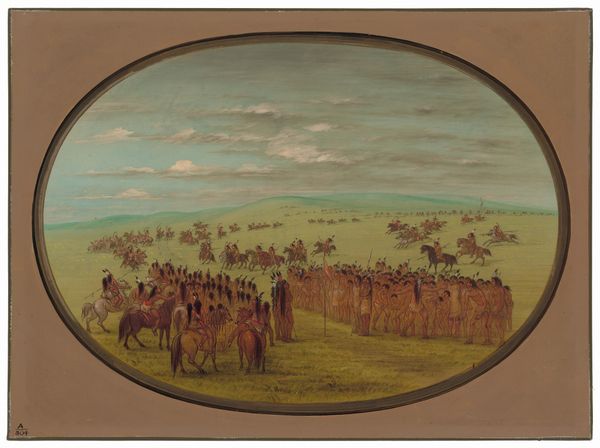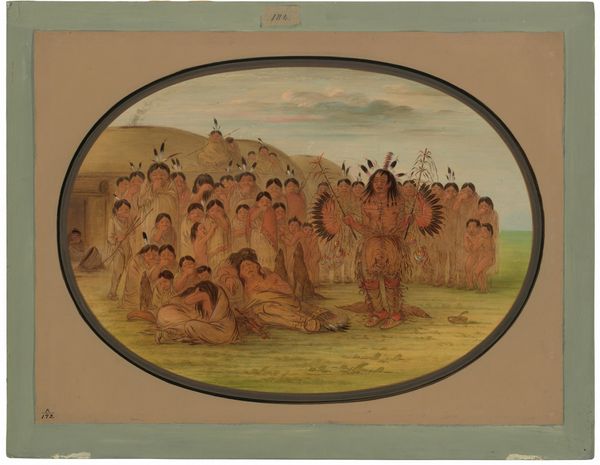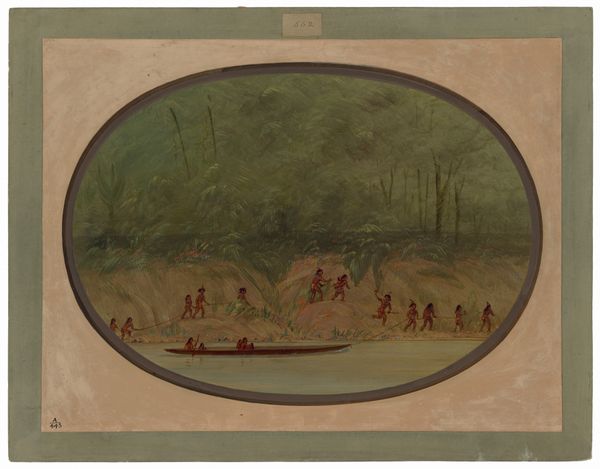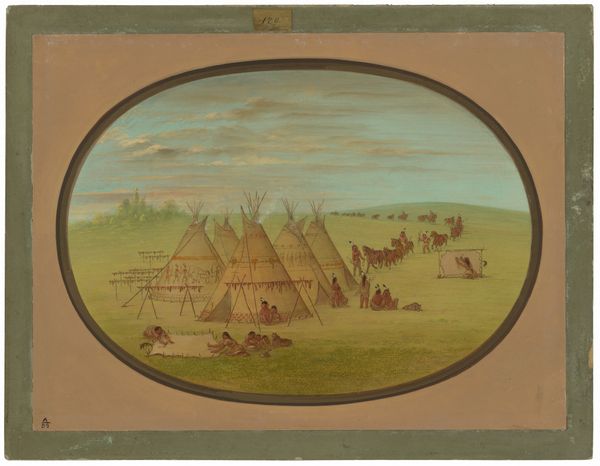
painting, gouache
#
water colours
#
narrative-art
#
painting
#
gouache
#
landscape
#
figuration
#
watercolor
Dimensions: overall: 46.7 x 61.8 cm (18 3/8 x 24 5/16 in.)
Copyright: National Gallery of Art: CC0 1.0
Curator: What strikes me immediately is the procession and almost ritualistic air about this image, with the people depicted becoming so small with distance. Editor: Indeed, that long trail really draws the eye, doesn’t it? The watercolour gives the whole scene a sort of dreamlike, receding quality, as if remembering a mythic past. Let's provide some context for our listeners. What we’re viewing is “Indian File - Iowa” by George Catlin, a painting dating from sometime between 1861 and 1869. Catlin, of course, is famous for his portrayals of Native Americans. Curator: The choice of watercolor gives it an ethereal feel but may not necessarily make it true, especially when we view how, for centuries, colonizers misrepresented Indigenous Peoples to fulfill self-serving agendas. Even now, many books contain damaging inaccuracies about American Indian culture. Editor: I see your point completely! But consider the artist and his role as witness – it may feel ethereal due to loss – as this march could echo not just cultural continuity, but the literal vanishing, the deliberate erasure of cultures… does that hit too hard? Curator: Not at all, you’ve highlighted an essential tension – the enduring cultural memory versus the brutal reality of dispossession. That perspective shift adds depth to the interpretation of the visual motifs; for example, their arrangement becomes indicative of unity. In cultural imagery, single file positioning may indicate forced removal as well. Editor: Right! And note the subdued palette. Is it elegiac, tinged with loss? I keep coming back to the dreamlike effect – memory itself fading. I wonder how intentional that was? Is the work then simply representational or intentionally laced with complex emotions of time and historical memory? Curator: It is probably both. Given that Catlin completed much of his work after extensive first-hand accounts of Native American tribes throughout the American West in the 1830s, and that there are questions of how and who determined "Indian Territory" that was and is the locale Iowa in this painting... The cultural image then is multilayered because this work is not simply about depicting a file of Ioway persons. Editor: A good point; the iconography and history behind the land cannot be extracted, further illuminating Catlin's perspective! It may very well show loss but may have a tint of ignorance about its greater role as one to paint history and the need for representation during that time. Curator: I appreciate this analysis – a deeper view to consider the relationship between continuity, visibility and imposed historical oblivion. Editor: Me too, a starker impression lingers than before we began.
Comments
No comments
Be the first to comment and join the conversation on the ultimate creative platform.
